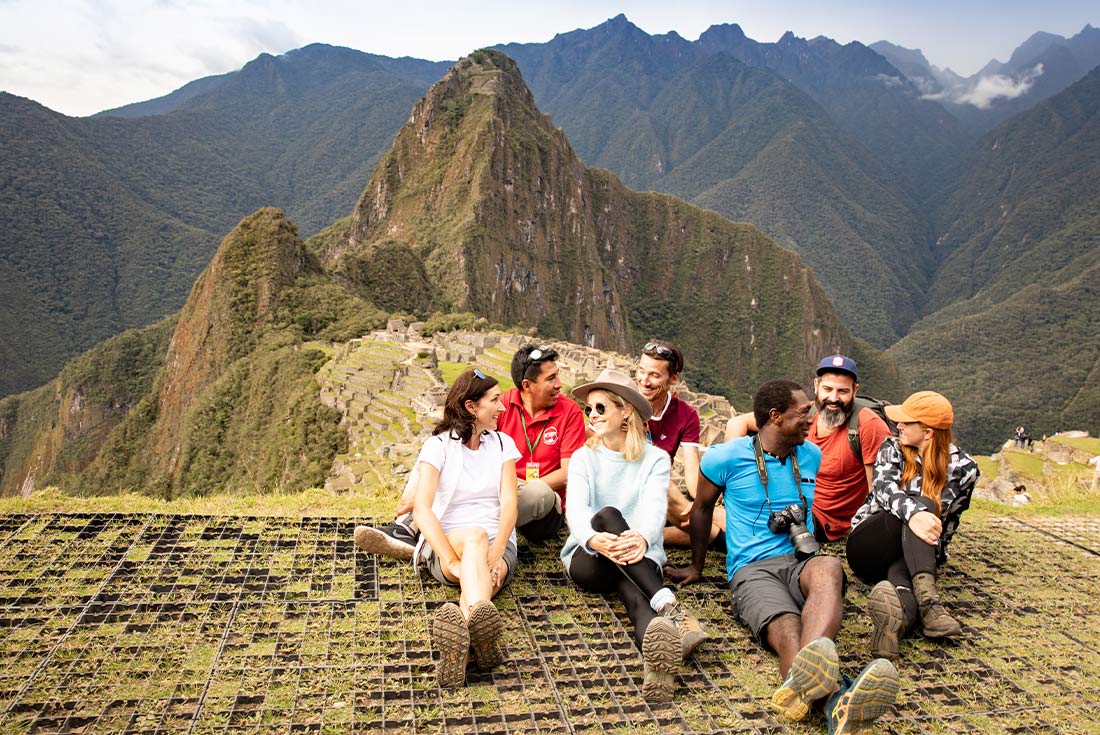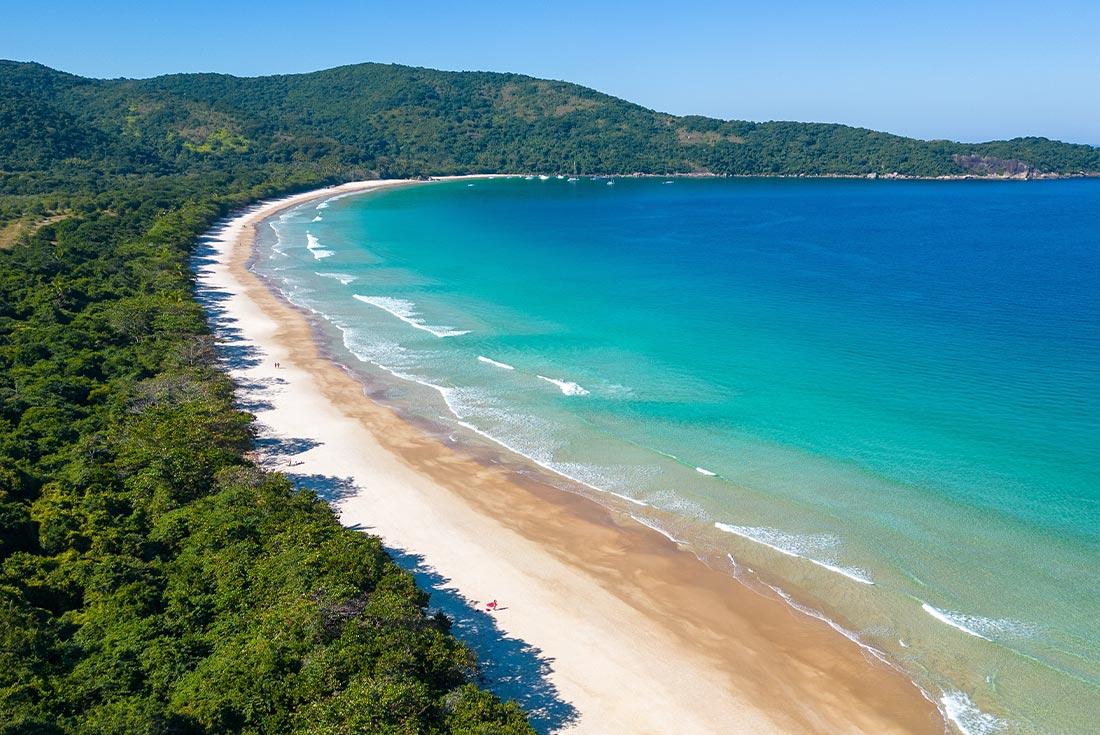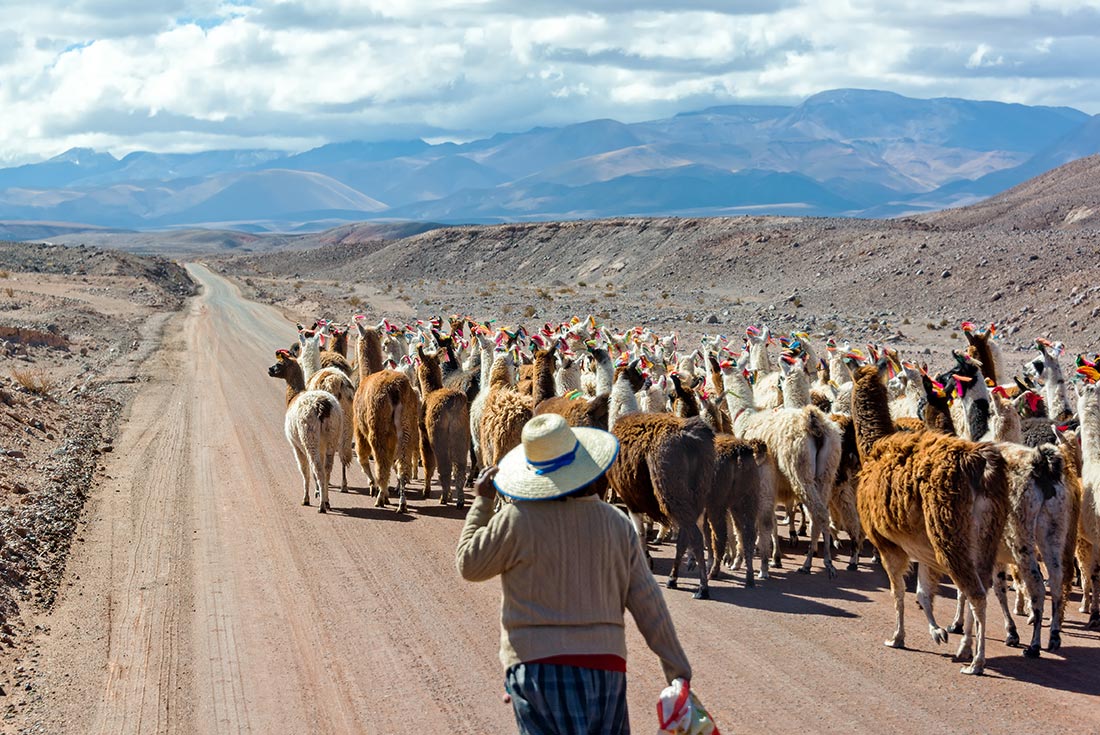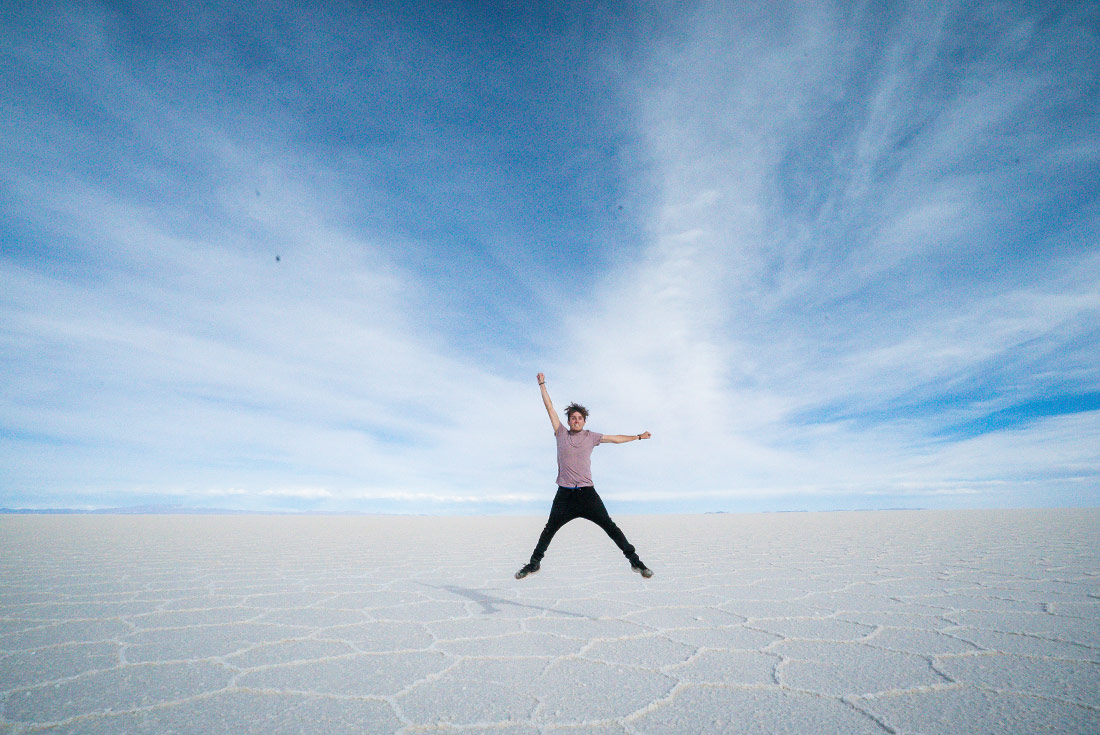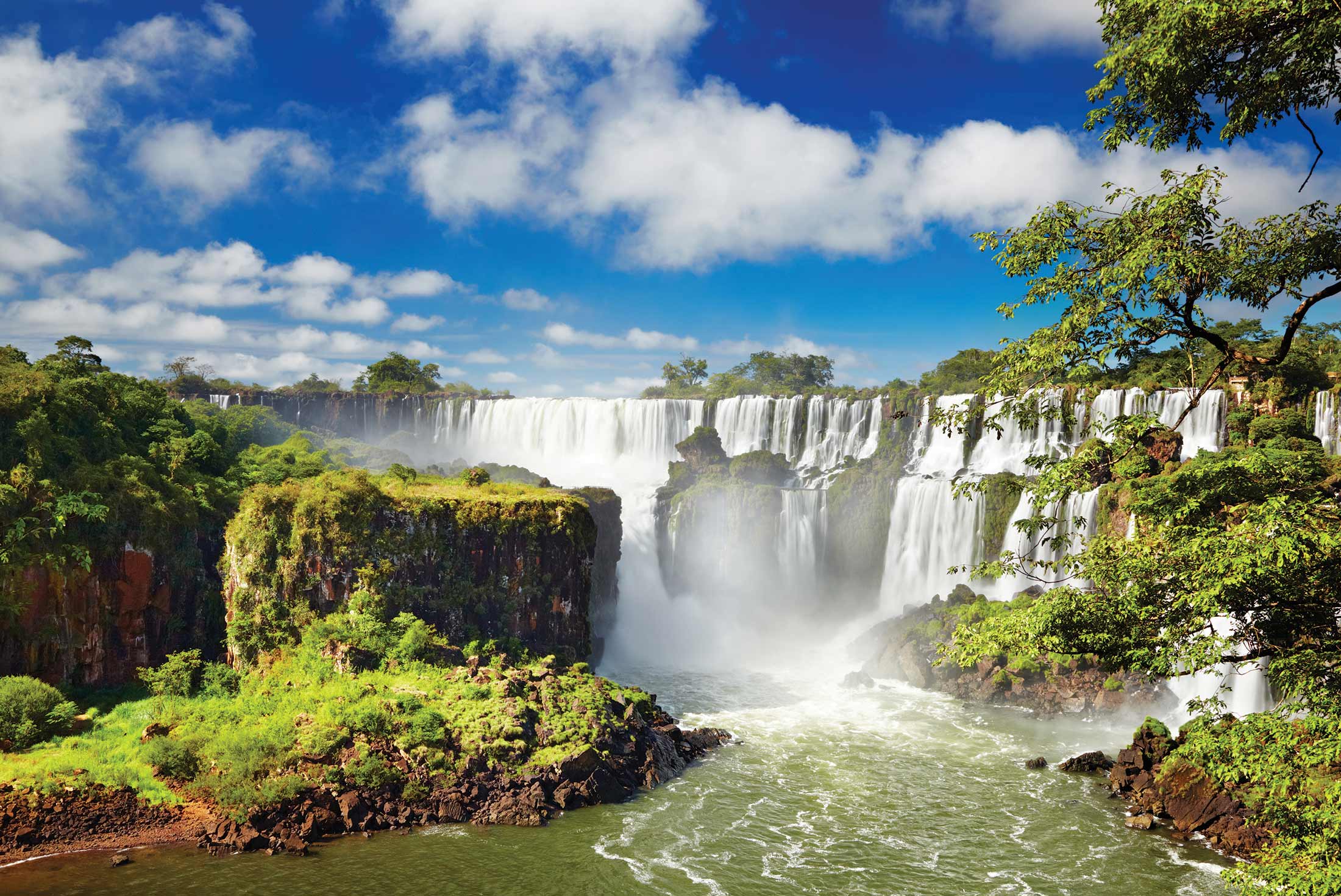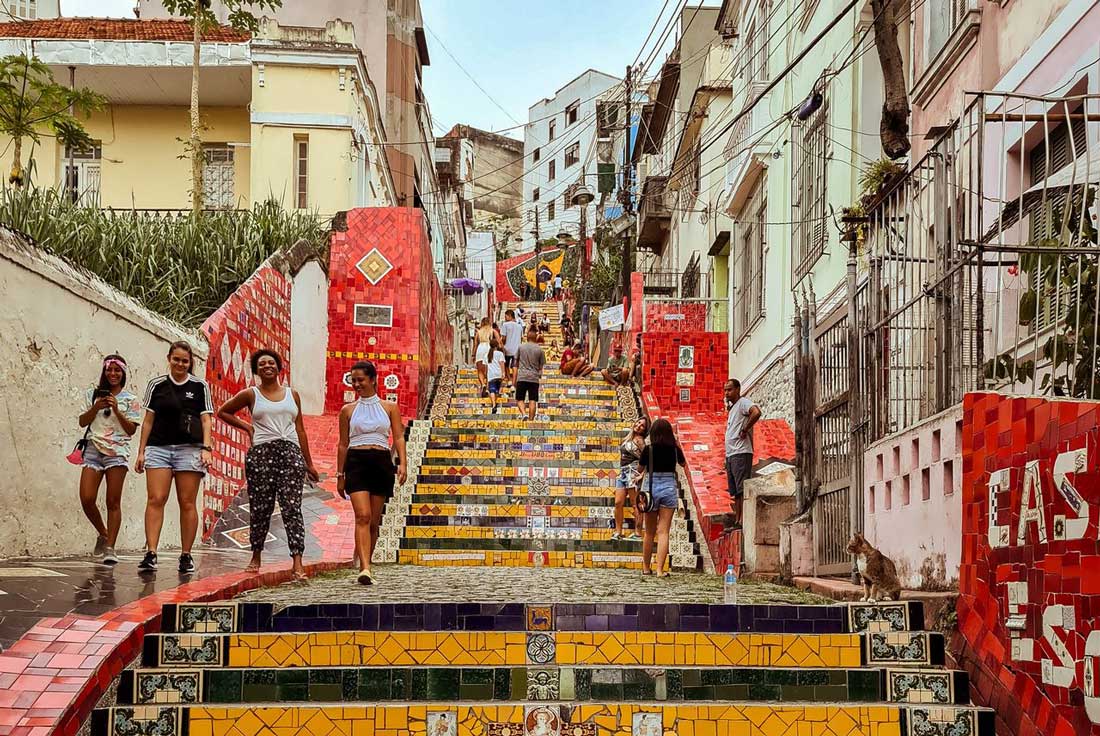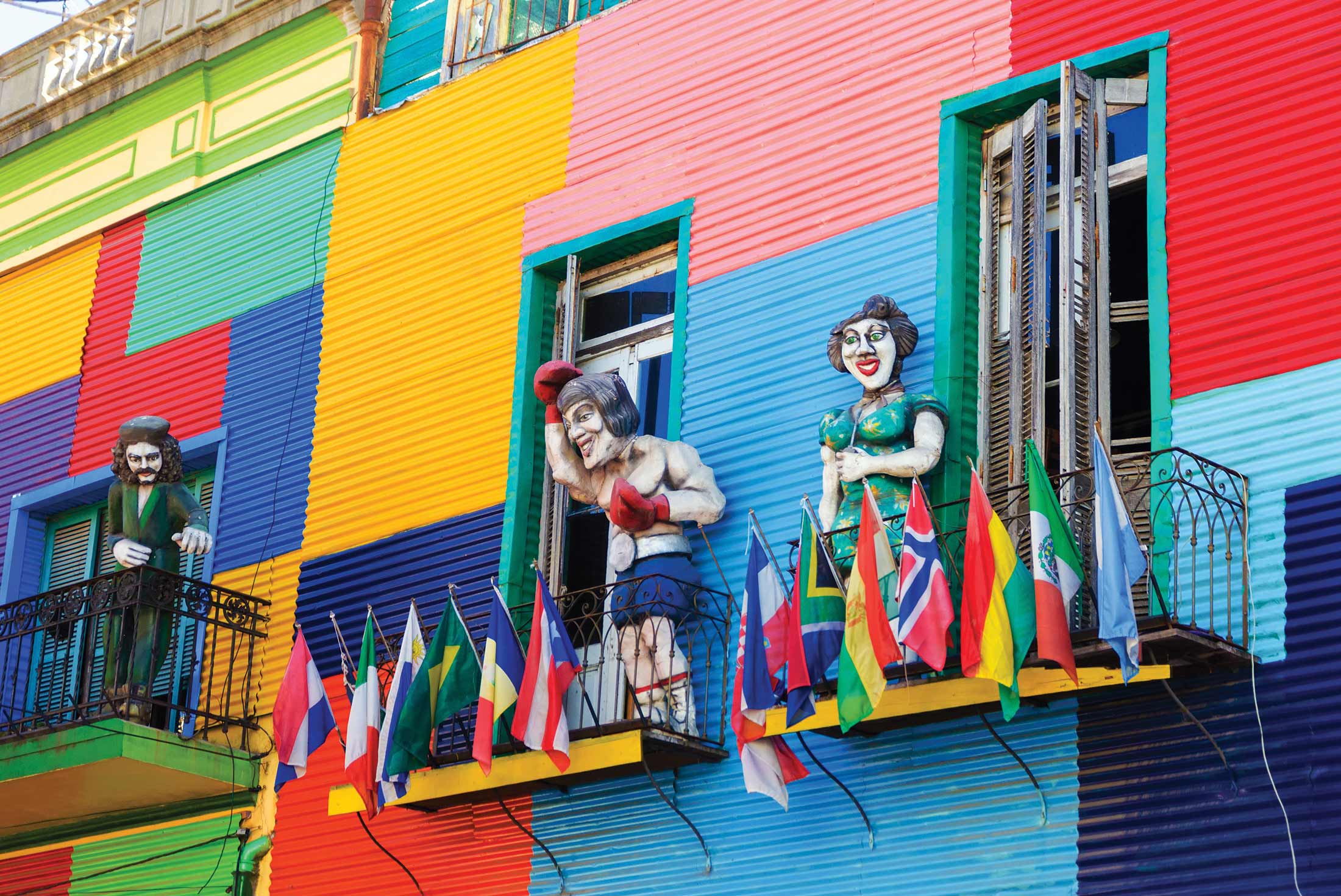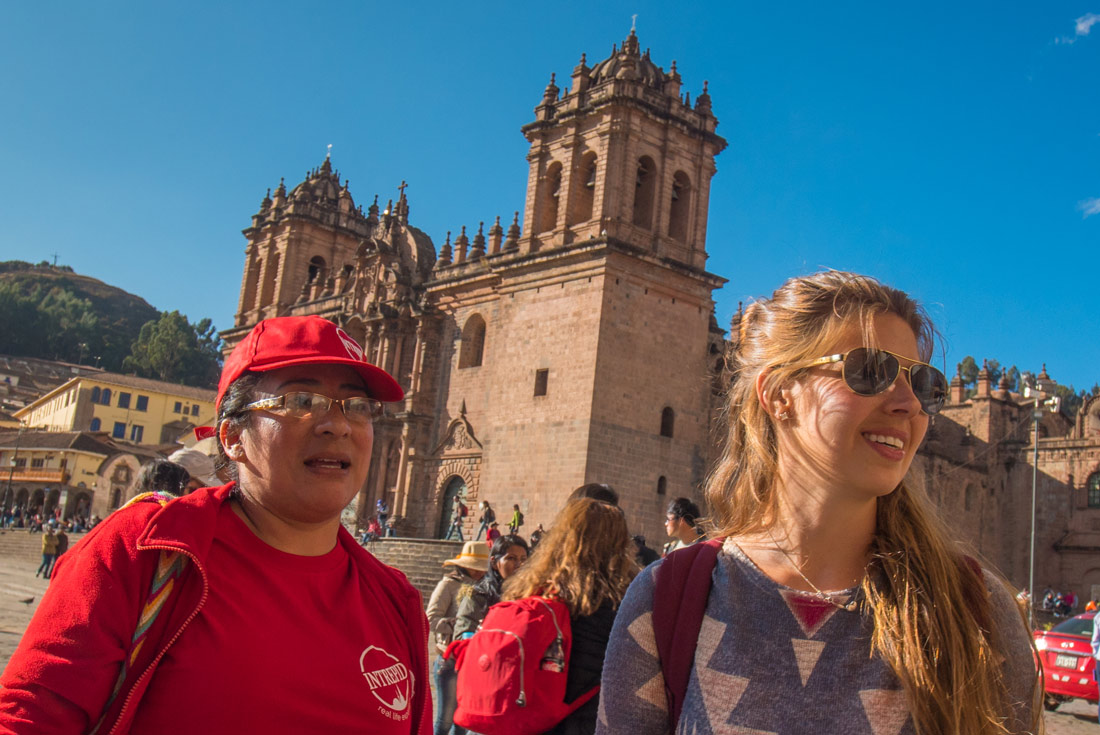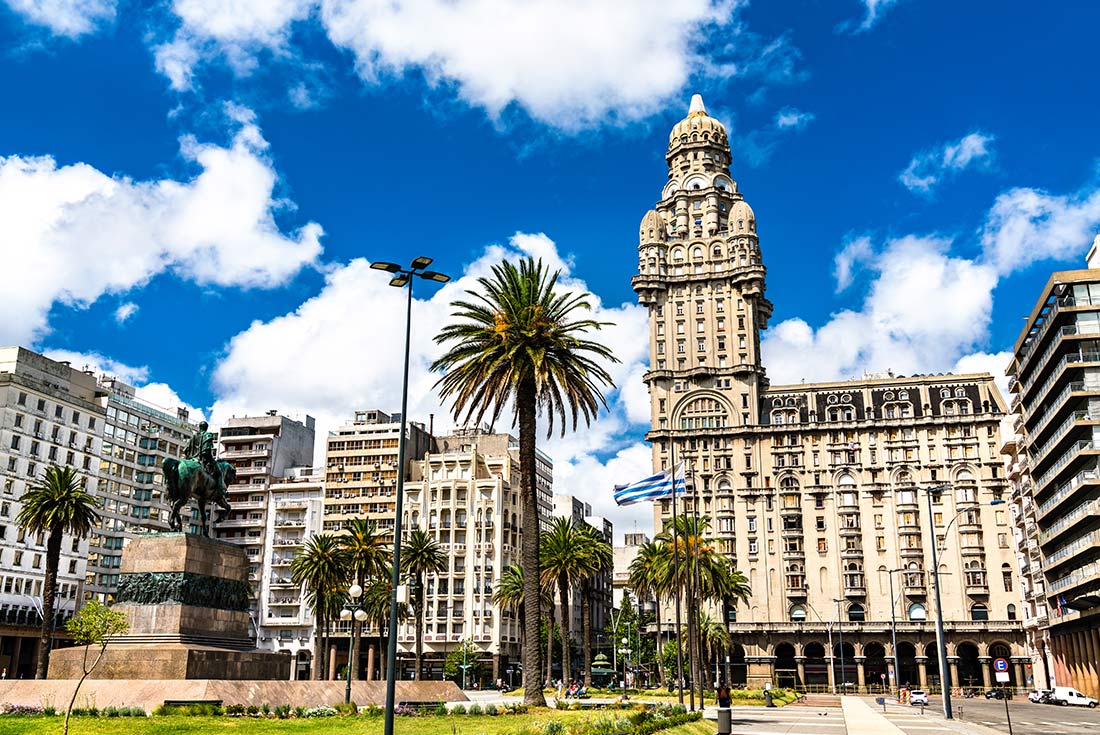- Head to a local community and rub shoulders with the inhabitants of the Sacred Valley – if you’re lucky, your travel day might even fall on market day where you can pick up some hand-painted beads or a warm poncho.
- Roam the Amazon Jungle by boat at night (with an expert local) and float down the river, keeping an eye out for the glaring eyes of jaguars, anacondas and caimans.
- Embark on a three-day adventure by 4WD across the rocky Atacama Desert in Salar de Uyuni and the largest salt lakes in the world. Pass cactus islands, train cemeteries and mineral lakes teeming with birdlife.
- Spend two nights at a working estancia (farm) in Uruguay, where you can spend your time getting involved in farm work, learning about gauchos, riding horses or simply relaxing in the sun.
- The mighty Iguazu Falls straddles the border between Argentina and Brazil, and you’ll cross the border to see its incredible cascades from both sides.
07 Feb 2024
Epic South America
GGYPC
Validity: 01 Jan 2024 to 31 Dec 2024
Experience the full spectrum of South America on this epic 39-day adventure. Follow in the footsteps of ancient people on the Inca Trail in Peru, drive past volcanoes, lakes, llamas and flamingos in the Atacama Desert and marvel at the might of Iguazu Falls. Spend nights on a working estancia (farm) in Uruguay and at a homestay on Lake Titicaca, sample Argentinian barbecue in Buenos Aires and roam through the Amazon jungle. With like-minded travel companions and a local leader providing recommendations at every stop, this’ll be a South American expedition like no other.
Basix
18 to 29s
4x4,Bus,Overnight bus,Plane,Taxi,Van,Boat
3
The physical rating on this trip is based on you selecting to trek either the Inca Trail or Quarry Trail. Should you wish to take the train option instead of trekking, you can consider the physical level a 2-3. On Day 2 of the Inca Trail or Quarry Trail you will be walking uphill from 3000 to 4500 metres above sea level before descending steeply through big steps and difficult terrain. While this demanding walk is the main challenge our passengers face on this trip, it's also one of the highlights and worth every minute of it. You can find out more about the trekking options here: https://www.intrepidtravel.com/adventures/inca-trail-vs-quarry-trail/ We recommend that you undertake regular aerobic exercise in the months before you travel, particularly if you are not in the habit of regular exercise. Doing mountain walks or climbing long staircases with a pack is good preparation. Walking, jogging, swimming or riding a bike are all good ways to increase your aerobic fitness, which will allow you to enjoy the trekking to its fullest. More information can be found here: https://www.intrepidtravel.com/adventures/trekking-training-guide-tips/
Hotel Santa Cruz
Av. Santa Cruz 1347
Miraflores
Lima
PERU
Hotel Santa Cruz is located on the skirts of district Miraflores. Some rooms are equipped with safety box, free WI-FI, hair dryer and air conditioning.
Please make sure that you provide your flight details, no later than 14 days before departure to book your arrival transfer with us. If you plan to arrive earlier, this arrival transfer can only be offered in conjunction with pre trip accommodation booked through Intrepid. Lima International Airport (LIM) is located in the Callao area of Lima, which is 25kms/15miles from the Miraflores area of the city. Depending on traffic conditions, the drive can take 30mins to 1.5 hours. International arrivals will exit Lima International Airport (LIM) at Gate 4. For your confirmed arrival transfer, please exit the airport, towards the parking lot. There is a fence immediately after the first lane, a transfer representative will be waiting here, holding an Intrepid sign. Please note that there are taxi totes right outside the gate and may approach you as Intrepid’s driver. Please only follow our transfer representative who hold a sign with Intrepid’s logo and your name. If you experience severe delays at immigration, baggage collection or customs, or if you are not able to find to the driver, please contact the phone number listed in the ‘Problems and emergency contact information’ section of this document. Alternatively, we recommend TAXI GREEN. They have information booths in the Arrivals Hall after you exit Customs. A taxi will cost approximately PEN80. Do not use the services of taxi drivers waiting outside the terminal as they charge very high fees.
Americas Benidorm Hotel (Benidorm Palace Hotel)
Rua Barata Ribeiro, 547
Copacabana
Rio de Janeiro
BRAZIL
Phone: +55 2125488880
1. In order to obtain the necessary permit to trek the Inca Trail, we must be provided with accurate details of the passport to be used whilst travelling in Peru. If the name, passport number, nationality or date of birth shown on the permit are different from the passport, park authorities will refuse entry. If passport details have not been supplied, the permit cannot be issued. When we are unable to secure the "Classic Trail", our groups take the "Inca Quarry Trek". This also applies during February each year, when the Classic Trail is closed for restoration. 2. A single supplement is available if you’d prefer not to share a room on this trip. The single supplement excludes Days 2 & 3 (Amazon Jungle), Days 6, 7 & 8 (Camping), Day 12 (Lake Titicaca Homestay), Days 16 & 32 (Overnight bus), Days 17 & 18 (Dormitory) and Days 30 & 31 (Estancia Stay) where you will be in shared accommodation and is subject to availability. Please speak to your booking agent for further information. 3. While hiking the 4 Day Inca Trail or 3 Day Inca Quarry trail portion of this trip you may be joined by some non-Intrepid travelers, who might be over the age of 29 years old. 4. Nationals from the United States need a visa to enter Bolivia and you we highly recommend you obtain this visa in advance from your nearest Bolivian consulate or Embassy. Not obtaining the visa in advance is likely to cause long delays at the border. 5. You may require a Brazilian Visa for this trip. Processing can take around 2-5 weeks at the discretion of the embassy or consulate. Please speak with your travel agent well in advance for further advice. 6. Full passport details are required at the time of booking in order to purchase Entrance fees to certain sites. Additionally on certain trips it's needed to book bus, train or flight tickets. Delays to provide this information may result in booking fees or changes to your itinerary. 7. In addition to a Traveler’s Affidavit, and health insurance, entry into Chile currently requires submitting proof of vaccination in advance of travel or proof of a negative PCR test within 48 hours of departure. As this validation process can take a while, it is recommended that you submit your electronic validation request 30 days in advance of Travel. The link to submit and more information is available here: https://www.chile.travel/en/traveltochileplan/ 8. We highly recommend you take US Dollars with you to Argentina and change it locally. While ATMs are widely available, there is a daily limit for withdrawals and the exchange rate does fluctuate. 9. The Inca Trail closes in February to allow cleaning and restoration works. If the trek portion starts in February, you will be automatically booked to hike the Inca Quarry Trail.
All group trips are accompanied by one of our group leader or local representative. The aim of the group leader or local representative is to take the hassle out of your travels and to help you have the best trip possible. Intrepid endeavours to provide the services of an experienced group leader or local representative however, due to the seasonality of travel, rare situations may arise where your group leader or local representative is new to a particular region or training other group leader or local representative. Your group leader or local representative will provide information on the places you are travelling through, offer suggestions for things to do and see, recommend great local eating venues and introduce you to our local friends. While not being guides in the traditional sense, you can expect them to have a broad general knowledge of the places visited on the trip, including historical, cultural, religious, and social aspects. At Intrepid we aim to support local guides who have specialised knowledge of the regions we visit. If you are interested in delving deeper into the local culture at a specific site or location then your group leader or local representative can recommend a local guide service in most of the main destinations of your trip.
Most national governments provide regularly updated foreign travel advice on safety issues involved with international travel. We recommend that you check your government's advice for their latest travel information before departure and ensure that your travel insurance covers you for all destinations and activities on your trip. Please refer to our website's safety page for links to major travel advisories and updates on safety issues affecting our trips here: https://www.intrepidtravel.com/travel-alerts We strongly recommend the use of a neck wallet or money belt while travelling, for the safe-keeping of your passport, flight tickets, cash and other valuable items. Leave your jewellery at home - you won't need it while travelling. Many of our hotels have safety deposit boxes, which is the most secure way of storing your valuables. A lock is recommended for securing your luggage. Your group leader or local representative will accompany you on all included activities, however, during your trip you'll have some free time to pursue your own interests or relax and take it easy. While your group leader or local representative will assist you with the available options in a given location, please note that any optional activities you undertake are not part of your Intrepid itinerary, and Intrepid makes no representations about the safety of the activity or the standard of the operators running them. Please use your own good judgement when selecting an activity in your free time. Please also note that your group leader or local representative has the authority to amend or cancel any part of the trip itinerary if it's deemed necessary due to safety concerns. Intrepid's operational safety policies can be viewed on our website at the link below. We recommend that you take a moment to read through this information before travelling, and would appreciate any feedback on how safety is being managed on our trips.
https://www.intrepidtravel.com/safety-guidelines
HIKING IN PERU In accordance with local laws governing tourism in Peru, trekking groups of up to and including 8 trekkers must be led by one local guide. The evacuation of an injured traveller in normal conditions may take more than 8 hours. For your own safety, it's crucial that you adhere to the local guide's safety instructions, particularly in regard to how to prevent trekkers getting separated or lost. Your leader will also conduct a safety discussion before our trekking activities.
PETTY THEFT AND PERSONAL SAFETY While travelling there is always the risk of pick-pocketing and petty theft, particularly in the more touristy cities. We recommend that you exercise caution when walking alone at night and encourage you to walk together and only on main, well-lit thoroughfares. Be particularly vigilant on public transport. Simple measures like carrying your day pack on your front, not hanging your bag over the back of your chair or on the floor and wearing a money belt will reduce any chance that your valuables should go missing.
MONEY WITHDRAWAL: In order to avoid fraud and theft, it is advisable that you withdraw money from ATMs located inside banks or guarded shops during business hours only.
LIMA AIRPORT TRANSFERS For safety reasons, we strongly recommend that during airport transfers in Lima all of your luggage, including hand luggage and valuables, is stored out of sight in the rear boot of the vehicle.
TRAFFIC AND DRIVING ON THE OTHER SIDE OF THE ROAD: Depending on where you come from please note that drivers in this part of the world may drive on the opposite side of the road from what you are used to. Look both ways before crossing any road. Traffic can be a little more chaotic than you might be used to at home. Be aware!
SEAT BELTS: Please be aware that local laws governing transportation safety may differ from those in your home country and not all the transport which we use is able to provide seat belts.
LIFE JACKETS: While life jackets are generally available on water craft, there may be occasions where they are not provided and child size life jackets are not always readily available. If travelling with children and this safety issue concerns you we will be able to advise alternative methods of transport (where available) for you to travel to the next destination. You can choose to travel independently for this leg of the journey. This would be at your own expense.
HORSE RIDING: Horse riding is an option available to groups on this trip. Please note however that horse riding is usually not covered by your travel insurance and helmets are not always available. If riding without a helmet is a concern then you should bring our own.
FIRE PRECAUTIONS: Please be aware that local laws governing tourism facilities in this region differ from those in your home country and not all the accommodation which we use has a fire exit, fire extinguishers or smoke alarms.
WhatsApp is a popular way to communicate in Latin America. We recommended downloading WhatsApp prior to departure to communicate by text with your group leader or local representative and group members during the tour. Once downloaded, please validate your phone number before leaving home as you will not be able to do this once you arrive unless you have international roaming enabled. Connections for making phone calls through WhatsApp are not reliable, so please do not use this app to make calls to our emergency phone line.
PASSPORT You’ll need a valid passport to travel internationally and most countries require your passport to have a minimum of 6 months validity, so remember to check the expiry date. We need your passport information to get everything ready for your trip so it’s important that the information on your booking matches your passport exactly. Please take care to provide the correct details. We recommend carrying a copy of the photo page of your passport while travelling and leaving a copy at home with family or friends. VISAS & ENTRY REQUIREMENTS Many countries require a visa and obtaining the correct visa for your trip and any countries you may transit through is your responsibility. We recommend you check your visa requirements as soon as you have booked your trip. This will ensure you have time to prepare your documents and for your visa application to be processed. You can check the entry requirements for your nationality on your government's foreign travel advisories, consular websites or on our page here: www.intrepidtravel.com/visa-entry-requirements From April 10th 2024 passport holders from Australia, Canada and the United States visiting Brazil will require a visa to enter the country. Applications for an e-visa will be through the portal at https://brazil.vfsevisa.com/. LETTER OF INVITATION CHILE: A Letter of Invitation (LOI) is required as part of the application. Please consult with your booking agent on getting this LOI. For more details on the visa application requirements, please visit: https://tramites.minrel.gov.cl/Solicitudes/visa.aspx It is a requirement of the Peruvian Tax Authority for our trip leaders to show proof that all travellers on our groups are foreign tourists and are thus exempt from the 18% Value Added Tax (VAT) charged to locals. This may require your trip leader to take a photograph of your main passport page and the page showing the immigration stamp you receive upon entry to Peru.
Head to a local community and rub shoulders with the inhabitants of the Sacred Valley – if you’re lucky, your travel day might even fall on market day where you can pick up some hand-painted beads or a warm poncho.
Roam the Amazon Jungle by boat at night (with an expert local) and float down the river, keeping an eye out for the glaring eyes of jaguars, anacondas and caimans.
Embark on a three-day adventure by 4WD across the rocky Atacama Desert in Salar de Uyuni and the largest salt lakes in the world. Pass cactus islands, train cemeteries and mineral lakes teeming with birdlife.
Spend two nights at a working estancia (farm) in Uruguay, where you can spend your time getting involved in farm work, learning about gauchos, riding horses or simply relaxing in the sun.
The mighty Iguazu Falls straddles the border between Argentina and Brazil, and you’ll cross the border to see its incredible cascades from both sides.
On this trip, you’ll be camping along the Inca Trail and spending the night in a homestay on Lake Titicaca. Bolivia is also the least developed and most challenging country you’ll travel around during this trip. Transportation can be slow and isn’t as easy as it might be in developed countries. Additionally, making your way across the Andean Desert involves long travel days spent in 4WDs on dusty and bumpy tracks. Temperatures in the area can be very cold, especially at night, so bring warm clothes. Meals are simple, toilet facilities are basic, showers can be cold, and the multi-share accommodation is dormitory style. This is all part of the adventure. The Amazon Jungle can be very hot and humid. Light cotton clothing is the best way to tackle this. Also, don't forget tropical-strength insect repellent! It’s also important to wear sunscreen and always drink plenty of water. This trip involves a lot of hiking and walking, so it does require a moderate level of fitness. There are a few different trail options to suit your interests and physical capabilities. Please bring durable footwear. See the ‘What to Take’ section of the Essential Trip information (ETI) for more information. Due to the high altitude of many places, some people can suffer altitude sickness. Some people aren’t affected at all, but if you are, be sure to drink plenty of water and don’t push yourself too hard. If possible, arrive a few days early to allow yourself time to acclimatise. Please see the ‘Health’ section of the Essential Trip information (ETI) for more important information about altitude sickness. Travellers who choose different ways of reaching Machu Picchu (Inca Trail, Quarry Trail or Train), will not follow the same routes within Machu Picchu. This means that you may not be able to have photos together overlooking Machu Picchu. This applies to travellers on the same booking or separate bookings. While at the estancia in Uruguay, you can choose to participate in the day-to-day activities of the farm as much or as little as you like. If you do choose to get involved, prepare for some early morning starts and to get your hands dirty when working directly with animals. The accommodation is multi-share and meals are served family style. Please inform your booking agent if you have any dietary requirements.
GENERAL HEALTH All travellers need to be in good physical health in order to participate fully on this trip. For the safety and wellbeing of yourself and others, if you are unwell prior to travelling, please stay at home and contact us to make alternative arrangements. When selecting your trip please make sure you have read through the itinerary carefully and assess your ability to manage and enjoy our style of travel. Please note that if in the assessment of our group leader or local representative a traveller is unable to complete the itinerary without undue risk to themselves and/or the rest of the group, we reserve the right to exclude them from all or part of a trip without refund. You should consult your doctor for up-to-date medical travel information or for any necessary vaccinations before departure. We recommend that you carry a first aid kit as well as any personal medical requirements in their original packaging as they may not easily be obtained while travelling. If you are carrying medication, ensure you check your government's foreign travel advice for any local restrictions or requirements. MOSQUITO-BORNE ILLNESSES: Some regions of Central & South America can experience outbreaks of dengue fever. There is no vaccination against it, but there are preventative measures that you can take such as wearing long clothing, using repellent, and being indoors particularly around dusk and dawn. If you have a fever or feel unwell, please let your group leader or local representative know right away. Protect yourself against mosquito-borne illnesses such as malaria by taking measures to avoid insect bites. ZIKA VIRUS: There have been reports of transmission of the mosquito-borne Zika virus in this region and we advise all travellers to protect themselves from mosquito bites. Given possible transmission of the disease to unborn babies, and taking a very cautious approach, we recommend all women who are pregnant or trying to get pregnant to consult with their doctors before booking their trip. ALTITUDE SICKNESS: Parts of your trip go above 2800 metres / 9200 feet where it is common for travellers to experience some adverse health effects due to the altitude - regardless of your age, gender and fitness. It even happened to Sir Edmund Hillary! Before your trip: Some pre-existing medical conditions are known to severely worsen at high altitude and be difficult to adequately treat on the ground, leading to more serious consequences. It is imperative that you discuss your pre-existing medical condition/s with your doctor. We understand certain medications are reported to aid acclimatizing to high altitude. Please discuss these options with your doctor. During your trip. While our group leader or local representative have basic first aid training and are aware of the closest medical facilities, it is very important that you are aware of the cause and effects of travelling at altitude, monitor your health and seek assistance accordingly. Please read the following document carefully and, during your trip, utilise the table on the back daily to record your own perspective of your general health and any symptoms you may experience: https://www.intrepidtravel.com/altitude-sickness YELLOW FEVER A valid international certificate of vaccination against Yellow Fever is required in many countries. You may need to present this on arrival at the airport or border crossing. Some countries will refuse entry if you are unable to present your certificate. It's also quite common for your home country to request a Yellow Fever certificate on your arrival back home. It is your responsibility to check with your doctor well in advance of leaving home about the Yellow Fever requirements for the countries you'll be visiting. DENGUE FEVER: Dengue Fever is common in Latin America and can occur throughout the year. Argentina, Bolivia, Uruguay, Brazil, and parts of Mexico are currently suffering from a serious outbreak. This virus is transmitted by mosquitoes. There is no vaccination against it, but there are preventative measures that you can take such as wearing long clothing, using repellent, and being indoors particularly around dusk and dawn.
While travelling with us you'll experience the vast array of wonderful food available in this region. Your group leader or local representative will be able to suggest restaurants to try during your trip. To give you the maximum flexibility in deciding where, what and with whom to eat, generally not all meals are included in the trip price. This also gives you more budgeting flexibility. As a rule, our groups tend to eat dinner together to enable you to taste a larger variety of dishes and enjoy each other's company. There's no obligation to do this though. DIETARY REQUIREMENTS Please let us know your diet requirements before your trip starts. Generally speaking, in bigger cities/towns vegetarians can expect a reasonable range of vegetarian venues and/or vegetarian options within tourist restaurant menus. However, vegetarianism is not the norm in this part of the world so options can be limited when eating at homestays, small local restaurants, street stalls, markets, etc. More restrictive diet requirements (vegans, coeliac, gluten intolerance, fructose intolerance, lactose intolerance, etc.) can also be accommodated along this trip but you should expect a lesser variety than what you can expect at home. We recommend that, if possible, to bring your own supply of snacks with you. For those on strict Kosher or Halal diets, we understand your dietary requirements are important, however, sometimes due to cultural and language differences these are not always easy to convey when you are travelling. Your guide will do their best to assist you in translating your needs when eating out, but please be aware that these diets are almost unheard of in much of the continent and the best they may be able to accommodate is no pork and shellfish. If this will be a concern for you you may need to consider opting for vegetarian or vegan meals for the included meals in your itinerary. We recommend researching kosher or halal options in your destination country prior to travel to see if you are able to buy snacks once there, otherwise consider bringing some from home.
LATIN AMERICA The recommended amounts are listed in USD for the relatability of universal travellers, however the local currency is needed in the countries you are visiting. CONTINGENCY FUNDS: We try to plan for every eventuality, but there are still some things beyond our control. Please make sure you have access to the equivalent of an extra US$500 for emergencies (e.g. severe weather, natural disasters, civil unrest) or other events that result in unavoidable changes to the itinerary (e.g. transport strikes or cancellations, airport closures). Sometimes these things necessitate last minute changes to enable our trips to continue to run, and as a result there may be some extra costs involved. MEALS NOT INCLUDED: For this trip we recommend between USD25 to USD50 per day. Breakfast - If breakfast is not included, you can expect to pay USD5 to USD10 at a local café. Lunch - If you are happy with a quick snack on the go, you may get away with as little as USD5 to USD10 for a set menu at a local eatery or a sandwich and a drink at a café. On the other hand, lunch at a tourist restaurant can cost USD10 to USD15. Dinner - At dinner time, your group leader or local representative will normally recommend restaurants where you can safely try the local specialties of the region. Expect meals to cost USD12 to USD25 for a main. These are indicative prices only. If you are on a tight budget and happy to eat local food you can eat cheaper than this. If you want to try the finest food at the finest restaurants, then you can expect meals to cost as much as in Western countries. CREDIT CARDS & ATMs: ATMs are widely available in major towns and cities across Latin America. Credit cards can generally be used in tourist shops and restaurants. Visa and Mastercard are generally preferred over American Express, Diners, etc. Smaller venues take cash only. DEPARTURE TAX: In most countries you must pay an airport departure tax. Nowadays, these departure taxes are added into the cost of your airline tickets and paid for at the time of purchase. Unless mentioned below, no airport departure tax has to be paid during this trip. BOLIVIA AIRPORT TAX Travellers departing from Bolivia are required to pay an airport tax as follows: BOB 14 (Domestic flights), USD 24 (International flights) Bolivia currency information: The official currency of Bolivia is the Boliviano (BOB). Chile currency information: The official currency of Chile is the Chilean Peso (CLP). Argentina currency information: The unit of currency in Argentina is the Argentinean peso (ARS). Uruguay currency information: The official currency of Uruguay is the Uruguayan Peso (URU). BRAZIL The local currency is the Brazilian Real (BRL). USD cash is the easiest currency to exchange. Credit cards are widely accepted, but banking facilities, such as ATMs, may be unreliable. Card cloning is common. Always keep sight of your card and do not use an ATM if you notice anything suspicious. Notify your bank in advance of your trip to avoid your card being blocked. If you withdraw cash at an ATM and it has any sort of pink marks on it, speak to the bank (or police) straight away to get it changed as it may have been marked as damaged or counterfeit. Withdrawing money can be difficult even if the ATM displays the Cirrus or Maestro logo. You may need to try several ATMs. Ask your bank if your ATM card will work and if it has an affiliate bank in Brazil. Credit card fraud and ATM tampering are widespread. Check your bank statements for unauthorised charges. To combat fraud and theft, many ATMs and banks don't allow withdrawals on foreign cards of more than BRL400 per day. The amount may be smaller after hours. TIPPING: Gratuities aren’t compulsory on your trip, but they can make a big difference to locals employed in the tourism industry. We suggest carrying small notes of local currency around as you go. It’ll make tipping easier. The recommended tipping amounts are listed in USD for the relatability of universal travellers. Usually around USD5 – USD10 a day to cover tips is fine, but your leader might raise the idea of a group tip kitty. Each traveller contributes an equal amount to the pool, and your leader can pay the tips as you go. SOUTH AMERICA - General Tipping Guide: To give you a bit of guidance, we’ve put together the following tipping notes. These are just suggestions, based on feedback from past travellers and our staff on the ground. - Restaurants: Local markets and basic restaurants - round your bill up to the nearest USD1. More up-market restaurants we suggest 10% to 15% of your bill. - Local guides: There might be times during the trip where you’ll have a specialist local guide alongside your trip leader. We suggest tipping these guides about USD2 – USD3 per day. - Drivers: You may have a range of drivers on your trip. Some may be with you for a short journey while others may be with you for several days. We suggest USD1-USD2 per day for drivers. - Your Tour Leader: You may also consider tipping your tour leader for outstanding service throughout your trip. The amount is entirely a personal preference, however as a guideline USD2-USD4 per person, per day can be used. Of course you are free to tip more or less as you see fit, depending on your perception of service quality and the length of your trip. Remember, a tip is not compulsory and should only be given when you receive excellent service. PERU TREKKING - General Tipping Guide: We recommend you carry the below suggested amounts with you during the trek and that you carry small bills as this makes splitting the tip an easier process. The last day of the trek the tipping will be broken down into envelopes – one per porter, assistant guides and guide. Inca Trail: we suggest a total tipping amount of PEN120 to PEN180 per person (approximately USD 37 to USD 55). This is generally the tipping breakdown: Porters, cook and assistants PEN 80 to PEN 120 Assistant guide: PEN 12 to PEN 20 Guide: PEN 27 to PEN 40 Quarry Trail: the suggested total tipping amount per person is PEN 120 to PEN 135 (approximately USD 37 to USD 42). This is generally the tipping breakdown: Porters, cook and assistants PEN 90 Assistant guide: PEN 9 to PEN 15 Guide: PEN 20 to PEN 30
Most travellers prefer to take a small to medium wheeled suitcase, which is a great size for the packing capacity in our private vehicles. Whatever you take, be mindful that you will need to be able to carry your own luggage, handle it at airports, take in/out of accommodation and perhaps even walk short distances. Generally speaking, we recommend you pack as lightly as possible. You'll also need a day pack/bag for activities and day trips. In terms of weight, Aerolineas Argentinas (domestic airline in Argentina) allows a maximum of 15kg for check in luggage. Other than the items and clothing you always need on a trip, below we have listed packing suggestions specific for this trip: RECOMMENDED: - Soft and/or hard copies of all important documents e.g. air tickets, passport, vaccination certificate, etc. and keep the hard copies separate from the originals. While not valid, a copy makes it very much easier to obtain replacements if necessary - Water bottle. We recommend at least a 1.5 litre capacity. The sale of bottled water contributes to an enormous environmental problem around the world. In addition to the water in bottles, the production of a 1 litre plastic bottle takes 2 litres of water and 200ml of oil. A large proportion end up in limited landfill or discarded in waterways and natural environments - Electrical adapter plug (view www.kropla.com) - Personal medical kit. Your guide will carry a large kit but we recommend you carry items such as mild pain killers, electrolytes and bandaids. - Watch/Alarm clock or phone that can be used for both OPTIONAL: - Ear plugs to guard against a potential snoring room-mate VALUABLES: Please try to avoid bringing unnecessary valuables, and use your hotel safe. It’s also a good idea to purchase a money belt or pouch that is easily hidden. LAUNDRY Laundry is available at many hotels and towns during this trip, although you might need to wait for a two-night stop in order to make sure you get it back in time. While laundry at hotels is usually charged by the item, laundromats usually charge by the kilo or per load, which is generally inexpensive (2 USD per Kg). ESSENTIAL: - Closed-in shoes will help to protect your feet from cuts and scratches when walking through cities as well as bush/grass-lands, and will also act as a barrier protection in rare cases against bites or stings - Sun protection - hat, sunscreen, sunglasses. - Day Pack - A day bag that has easy access to water bottles (external side pockets) or a day pack with a built in hydration bladder. This bag only needs to be large enough to hold the few things you need during the day (hat, water, camera, snacks, rain jacket etc) - Waterproof, well worn-in walking boots - Good quality, comfortable footwear is essential. Whatever you wear on your feet the most important thing is comfort. It is vital to ensure your boots are well worn in and lightweight. Ankle support and waterproofing is recommended but if you already have something comfortable with good grip on rocks then don’t go rushing out to buy new boots – you are better off with your well-worn in pair! - Walking clothing - Its best to bring clothes that can be layered so you can adjust layers according to the weather which is ever-changing in the Falklands. Please ensure this includes a waterproof jacket and pants. -Basic personal toiletries
PERU TREKKING Tents and sleeping mats are provided for the duration of your Peru trek. At the pre-trek briefing you will be given a small duffle bag to pack your clothes for the trek, please note there is a 5kg limit, this includes your sleeping bag. In addition to the general packing list above, please ensure you bring these items if you are trekking in Peru. Passport: You MUST take your passport, a photocopy is not sufficient. It's important the passport matches the details your provided us when booking this trip (Keep it in a plastic bag in case of rain) Sleeping bag: You will need a good warm sleeping bag for the trek. Sleeping bags can be hired for US20-25, please let your Tour Leader know at the trek briefing. A four season (or -10) bag is recommended especially for the winter months. At other times you will probably be fine in a 3 season (or -5) bag although this depends on how much you feel the cold and is given as a guideline only. Silk sleeping bag liner: Especially recommended if you plan to hire a sleeping bag but can also give your own bag added warmth. Pillow Pillows are not provided on the trek and it's your personal preference if you wish to bring one along. If you decide to bring a pillow then we do suggest packing a travel friendly option, something that can be easily packed into your small duffle bag. Trek Poles: Trek poles are not required, it's a personal preference. We recommend hiring these at the pre-trek briefing for approximately US$10 per pole as it will save you carting them around for the remainder of your travels. Day Pack: A day bag that has easy access to water bottles (external side pockets) or a day pack with a built in hydration bladder. This bag only needs to be large enough to hold the few things you need during the day (hat, water, camera, snacks, rain jacket etc) Water bottle: You should be carrying at least 2 litres of water daily, while trekking. Depending on whether you have a hydration bladder in your bag or not we recommend bringing two (1 litre) bottles that can be refilled on the trail with boiled water, which will be supplied daily. Waterproof, well worn-in walking boots: Good quality, comfortable footwear is essential. Whatever you wear on your feet the most important thing is comfort. It is vital to ensure your boots are well worn in and lightweight. Ankle support and waterproofing is recommended but if you already have something comfortable with good grip on rocks then don’t go rushing out to buy new boots – you are better off with your well-worn in pair! Walking clothing in layers: (E.g. zip off trousers, fleece, T-shirts). It’s a personal choice as to how many items you bring however please remember there’s a 5kg limit. We recommend the following; • 2 Pairs of long Walking Trousers (Zip off are a very hand choice but not a necessity) • 2 T-shirts • 1 Pair of shorts • Rain Jacket or Poncho (Poncho can be purchased locally for a $2-3) • 4-5 Pairs of Thick socks Warm clothing for night time: Fleece, long pants, woollen hat, gloves. Thermal underwear: Thermal wear is highly recommended, being light, warm and will keep you warm at night. Sunscreen, sunglasses and sunhat Personal medication and basic first aid kit: Band-Aids, Imodium, Panadol, rehydration sachets. Camera and spare batteries, memory cards or film: Please note: there are no electrical outlets on the trek so make sure you fully charge and or have spare batteries. Snacks: Chocolates, chips, biscuits, energy bars. Snacks are provided during the trek but you may like to bring one or two extras just in case. If you have a dietary requirement then be recommend bringing some suitable snacks from home. We will accommodate you for Breakfast, lunch and dinner however for snacks it’s recommended to bring some just to be safe. Head torch or Standard Torch (flash-light) (Very Important) and spare batteries. Tropical strength insect repellent. Antiseptic hand gel. Flip-flops / thongs / jandals: If you wish to have a shower on the third night and to wear around camp after a long day of trekking. Ear Plugs: In case your tent ‘roomie’ is a snorer. Plastic bags: To keep your belongings and clothes dry (wrap everything in plastic bags). Toilet paper: Most important! Also small plastic bags or zip lock bags for rubbish which can then be thrown in the main rubbish bag provided by the porters. Please don’t dispose of your toilet paper on the ground! Wet wipes and or Face wipes: These are an essential and will come in handy after a long day of trekking and no showers. Small towel and basic personal toiletries: On the third night of both the Inca Trail and the Inca Quarry there is an opportunity to have a shower so bring travel size shampoo and shower gel if you would like.
HEAVY RAIN ON THE INCA TRAIL If it rains heavily for a number of consecutive days the terrain on the third campsite (Wiñaywayna) can become unstable increasing the danger of landslides. In such instances, the number of safe camping spots is outnumbered by the number campers. This could occur mostly during the wet season (December to March) although it could also happen at any time of the year. If that’s the case, some groups will spend the third night at a campsite in Aguas Calientes (Machu Picchu Town). This decision is made by Inca trail local authorities using a lottery type system (Intrepid has no control over this lottery process) Since there may be hotel availability nearby the Aguas Calientes campsite, you can choose to upgrade to a hotel at your own expense. We can provide you an insurance letter in this case in order to lodge a travel insurance claim for any incidental costs.
We like to think our Intrepid travellers are all connected by a love of adventure and passion for seeing the world in a different way. We've laid down a few non-negotiable rules to ensure everyone feels connected, comfortable and safe on our trips. We ask that you respect your fellow travellers, group leader or local representative, and local people and places we visit in all circumstances. We don't tolerate any forms of violence and expect that you follow the local laws, customs and regulations in any destination we travel to. Any behaviour contrary to the above, including any behaviour that prevents our staff from performing their duty of care or continuing the itinerary as planned, may result in travellers being removed from the trip. If you consume alcohol while travelling, we encourage responsible drinking and expect you to abide by local alcohol laws. To ensure the well-being of everyone on the trip, all decisions made by group leaders or local representatives and ground staff are final. Romantic relationships between travellers and group leader or local representative are not permitted while on trip. By travelling with us, you agree to comply with these rules and the laws and customs of all countries visited. If something is concerning you during your travels with us, please speak to your group leader or local representative immediately. Alternatively, contact us on the emergency contact number detailed in your Essential Trip Information’s Problems and Emergency Contact section.
After your travels, we want to hear from you! We rely on your feedback. We read it carefully. Feedback helps us understand what we are doing well and what we could be doing better. It allows us to make improvements for future travellers. http://www.intrepidtravel.com/feedback/
While we always endeavour to provide the best possible holiday experience, due to the nature of travel and the areas we visit sometimes things can and do go wrong. Should any issue occur while you are on your trip, it is imperative that you discuss this with your group leader or local representative straight away so that they can do their best to rectify the problem and save any potential negative impact on the rest of your trip. We recognise that there may be times when your group leader or local representative may not be able to resolve a situation to your satisfaction - if this is the case, please ask the group leader or local representative to speak to their direct manager. You may also choose to provide details in your online feedback, which we ask you to complete within 30 days of the end of your trip. Please do be aware that it is very difficult for us to provide any practical help after the trip is completed, so informing us while still travelling will give us the opportunity to resolve the issue in real-time. For general contact details please use the following page: http://www.intrepidtravel.com/ourtrips/contact/ In case of a genuine crisis or emergency, you can reach our local office on the numbers below: Available for phone call or WhatsApp call on +51 996 055559 Lima, +51 940 512701 Cusco
Our Responsible Travel Policy outlines our commitment to preserving the environment, supporting local communities, protecting the vulnerable, and giving back to the places we travel. All our trip group leaders or local representatives, suppliers, and staff are trained on these principles and are core to us delivering sustainable, experience-rich travel. Explore the different parts of our Responsible Travel Policy by visiting: https://www.intrepidtravel.com/responsible-travel Our Responsible Travel Policy outlines our commitment to preserving the environment, supporting local communities, protecting the vulnerable, and giving back to the places we travel. All our trip group leaders or local representatives, suppliers, and staff are trained on these principles and are core to us delivering sustainable, experience-rich travel. Explore the different parts of our Responsible Travel Policy by visiting: https://www.intrepidtravel.com/responsible-travel
We created our not-for-profit, the Intrepid Foundation because you – our travellers – told us you wanted to make an even greater impact in the communities you visit. The Foundation works by teaming up with partners around the world so that together we can deliver greater positive impact at scale. Partners are identified by our local staff who live and work in our destinations. They harness their powerful community connections to determine the issues that matter most and select local partners who can deliver real solutions. Since 2002, the Intrepid Foundation has raised more than $14million dollars and supported more than 160 communities worldwide. Now, with over 40 partners all over the world, your donations are helping to restore forests in Kenya, empower women in Honduras and promote elephant welfare in Laos, to name just a few. For more information about the Intrepid Foundation, please ask your group leader or local representative or visit our website: http://www.theintrepidfoundation.org/ This trip supports Gastromotiva, an organisation tackling youth unemployment and homelessness while promoting a zero-waste movement in Brazil. Gastromotiva addresses important social and environmental issues through job training, advocacy, and sustainable cooking classes. Donations support their professional cooking courses for vulnerable youth in Rio De Janeiro. Intrepid will double your impact by dollar-matching post-trip donations made to The Intrepid Foundation. To find out more or make a donation, visit: www.theintrepidfoundation.org/t/gastromotiva
The style of accommodation indicated in the day-to-day itinerary is a guideline only and may change. On some occasions, alternative arrangements may need to be made due to the lack of availability of rooms in our preferred accommodation. In these cases, we will use a similar standard of accommodation. Throughout the trip, we request that our properties prepare rooms in time for our arrival, especially if we're arriving prior to normal check-in time. However, this isn't always possible which means we won't be able to check-in immediately on arrival at some hotels. Instead, we can store our luggage and explore our new destination or on some trips, have use of shared day rooms until all rooms are available. LAKE TITICACA HOMESTAYS As a responsible travel company, we believe in facilitating positive and meaningful exchanges between our travellers and locals at the places we visit. Homestays are a great vehicle for us to facilitate this! What will you do during a homestay? Well…it’s hard to tell. As you know a day in a family’s life varies from day to day. We don’t want this experience to feel forced (on you or on them) so we ask families to simply carry on with their lives and that, if there is anything that you may be interested in being part of, they ask you to join in. As such you may be invited to help cook dinner, or to go to the local market for groceries, or to join a soccer game with the kids! While your leader will give you some tools to interact with your family (such as some simple words/phrases in Quechua and/or Spanish) big smiles and lots of sign language can go a long way! That said, it’s also important that you understand that you are not obliged to participate in these activities. We believe that the more you put in the more you get out of an experience, but we also understand that you may just want to chill out, grab a book or your camera and go for a wander – and that is fine too. Ultimately, we believe that by simply being there, observing family and friends dynamics is a step forward towards understanding the local way of life. In terms of facilities, the rooms are clean and comfortable (or as comfortable as they get in this part of the world!) however quite basic. Plenty of blankets are provided. Ask for more if you are cold. Layering up with thin thermals and a fleece material will help during very cold nights too. Lastly, be aware that some homestays in Lake Titicaca have shared drop toilets and no showers. So mind your step! PERU Due to local energy supply and infrastructure issues, please be prepared for some cold showers while travelling in Peru.
Our overnight buses have reclinable seats - usually more comfortable than your average economy plane seats. You may be offered a simple dinner on board or stop at a service station to buy snacks and drinks. Before boarding an overnight bus, it's always a good idea to have music, a book, water, snacks and warm clothing ready.
Travel insurance is compulsory on all our trips for those travelling internationally. We require that at a minimum you are covered for medical expenses including emergency repatriation. If you are travelling within your home country or region please confirm before travel that you are entitled to access the public medical system easily should an accident occur. We strongly recommend all travellers have a policy that also covers personal liability, cancellation, curtailment and loss of luggage or personal effects. For international trips, you will not be permitted to join the group until evidence of travel insurance and the insurance company's 24-hour emergency contact number has been sighted by your group leader or local representative. If you have credit card insurance your group leader or local representative will require details of the participating insurer/underwriter, the level of coverage, policy number, and emergency contact number rather than the bank's name and your credit card details. Please contact your bank for these details prior to arriving in-country. For travellers who reside within the European Union, Switzerland or USA the requirement to purchase travel insurance cannot be compulsory. However the purchase of travel insurance is still highly recommended, and travellers from these regions who decline travel insurance when travelling outside of their home region must sign a Travel Insurance Waiver Form at the Group Meeting, recognizing personal responsibility for emergency medical and repatriation costs should they arise. For assistance with travel insurance or other services, please visit the link below: https://www.intrepidtravel.com/booking-resources/our-services
As you travel on a group trip you will be exposed to all the pleasures and maybe some of the frustrations of travelling in a group. Your fellow travellers will probably come from all corners of the world and likely a range of age groups too. We ask you to be understanding of the various needs and preferences of your group - patience with your fellow travellers is sometimes required for the benefit of everyone's travel experience. Remember too that you have responsibilities to the group. If you are requested to be at a place at a certain time, ensure that you don't keep the rest of the group waiting. We have found time and time again that the very best trips we operate are those where the dynamics within the group work well - this takes just a little effort on your part. Due to privacy reasons, we are unable to provide you with contact details and any personal information about your fellow travellers booked on your trip prior to departure. SOLO TRAVELLERS The beauty of our style of travel is that it caters to travellers who are travelling solo and who want to meet and share experiences with like-minded people. On our trips rooming is organised on a twin-share basis. We pair up solo travellers with another traveller of the same gender as per the gender marker on each of their passports. As a responsible tour operator, we strive to create a safe and inclusive environment for everyone. In the case that your gender identity differs from what is indicated on your passport, please contact us so that we can discuss rooming options with you. We also have an optional single supplement available on most trips for travellers who prefer to have their own room. Please note that this only applies to accommodation during the tour. Pre-trip and post-trip accommodation booked through us will be on a single room basis. On a small selection of itineraries some accommodations are booked on an open gender, multi-share basis (for example on a felucca in Egypt or an overnight train in Vietnam). In those instances it will clearly be stated in our Essential Trip Information prior to booking and travelling.
ITINERARY CHANGES Our itineraries are updated regularly throughout the year based on customer feedback and to reflect the current situation in each destination. The information included in this Essential Trip Information may therefore differ from when you first booked your trip. It's important that you review this information prior to travel so that you have the latest updates. Due to weather, local conditions, transport schedules, public holidays, political unrest or other factors, further changes may be necessary to your itinerary once in-country. Your group leader or local representative will keep you up to date with any such changes once your trip is underway. OPTIONAL ACTIVITIES A selection of optional activities that have been popular with past travellers are listed in the day-to-day itinerary. This isn't an exhaustive list and should be used as a guide only for some of what might be available. Prices are approximate, are for entrance fees only, and don’t include transport to and from the sites or local guides unless indicated. All activities are subject to availability, and maybe on a join-in basis. It may not be possible to do all the activities listed in the time available at each destination, so some pre-planning for what you are most interested in is advised. When it's recommended that travellers pre-book these activities, look for a note in the Special Information section of the day-to-day itinerary. For most, they can either be organised independently on the day, or let your group leader or local representative know you are interested at the Welcome Meeting and they can assist. Where activities are considered medium or high risk, we work with operators whose safety and credentials we have sighted and assessed. Although it is possible that you may find the same activity cheaper with another operator on the ground, we cannot vouch for the safety or quality of that operator. Medium and high-risk activities not listed above have not been assessed by us and as such our staff and group leader or local representative are unable to assist you with organising these activities. Activities that contravene our Responsible Travel policies are also not listed. Please remember that the decision to partake in any activity not listed is at your own discretion and risk. HEAVY RAIN ON THE INCA TRAIL If it rains heavily for a number of consecutive days, the terrain at the third campsite (Wiñaywayna) can become unstable, increasing the danger of landslides and making it unsafe to camp. This occurs mostly during the wet season (December to March) although it can also happen at any time of the year. Your trekking guide may assess that it's safer to spend the third night in a hotel in Aguas Calientes (Machu Picchu), or if available, to camp at Puente Ruinas campsite. You may need to use your contingency funds to cover any additional costs. An letter can be provided for lodging a travel insurance claim for these costs. DEMONSTRATIONS & STRIKES: Demonstrations and protests, often in response to local labour or social issues, occur regularly in Peru. National strikes can be called at short notice and can cause disruption to road networks leading to inevitable itinerary changes. We will do everything possible for these changes to be at little or no extra cost; however in such circumstances we find that travellers may need to use their contingency funds to cover the costs of itinerary changes.
Camping (with basic facilities) (3 nights),Dormitory (2 nights),Amazon Lodge (2 nights),Homestay (1 night),Hotel (26 nights),Overnight bus (2 nights),Estancia (multi-share) (2 nights)

